Fork Length, Rake and Trail
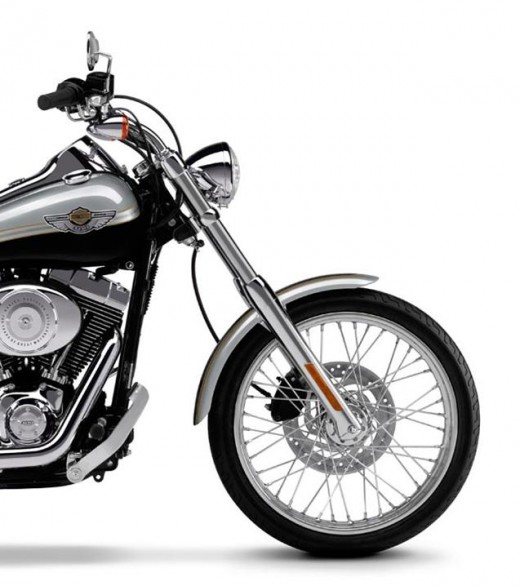
Chopper Fundamentals 101
Motorcycle Fork Geometry and Measurement
One of the most crucial components when building a custom chopper, or customizing a motorcycle, is the front forks. Whether you choose tube forks, springer forks or girder forks the right front end will significantly affect ride comfort and handling.
Certain geometry and measurements should be understood before purchasing the front forks for your motorcycle or chopper. The first to be discussed will be fork length, followed by rake and then trail.
Fork Length
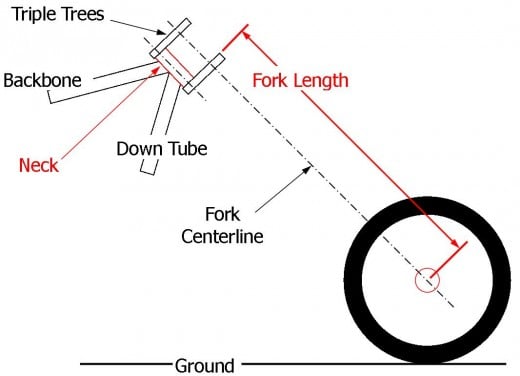
Measuring Fork Length
Fork length is measured from the base of the frame neck to the center point of the axle mounting hole. For any off-the-shelf motorcycle this standard measurement for the front forks is considered stock length. When buying forks other than original replacement parts, their lengths are compared to the stock length. Forks that measure longer than stock are listed as Over-Length (OL). Those forks that measure shorter are listed as Under-Length (UL). If the forks are the same length as original the fork length is listed as stock. It is important to note that when the rake angle is changed, fork length may need to change in order to compensate for the change in rake angle.
Frame Rake
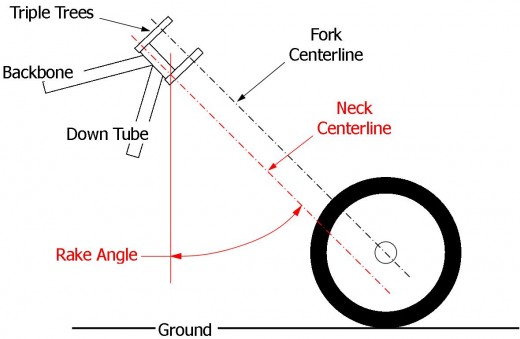
What is Frame Rake (Rake Angle)?
Frame rake is the angle formed by the center line of the neck tube and a vertical line. As a rule of thumb, the greater (higher) the rake angle, the longer the front forks must be. The rake angle can have a profound effect on handling characteristics and the aesthetics of a chopper.
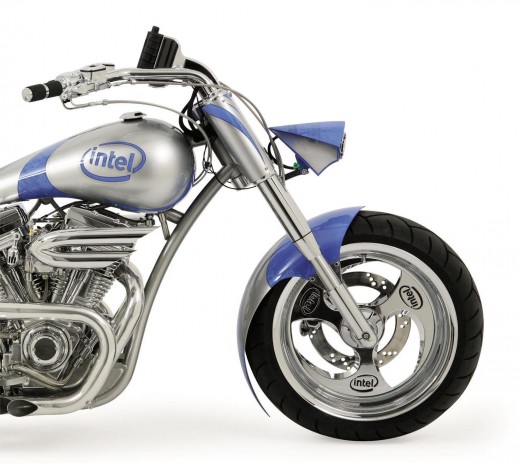
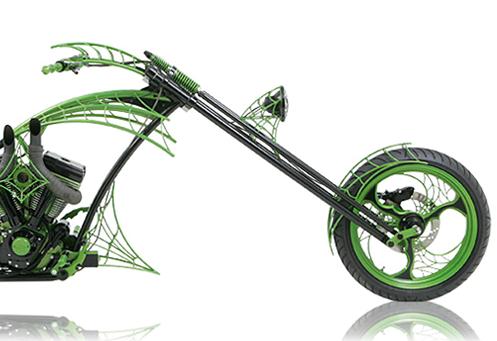
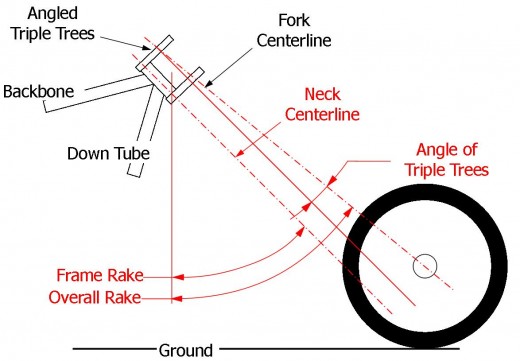
Changing Rake Angle
Rake angles can be changed in two ways. Changing the neck angle on the frame, or adding angled triple trees.
Changing the neck angle involves cutting the neck from the frame tubes and lengthening or shortening the frame tubes to get the desired angle, then welding the neck tube back into place. This is not a job for a novice. Any change in frame geometry can result in serious handling changes. Consult a local fabricator or motorcycle shop. Custom frames can be purchased with a variety of rakes.
The other option is to mount the front forks with angled triple trees. Angled triple trees use mounting holes that have been angled in order to add 2-5 degrees of rake to the front forks without changing frame geometry. These are very useful for adjusting trail when minor changes to fork length, and wheel sizes have been made.
A quick math example, along with the illustration to the right (Affect Of Angled Triple Trees), should demonstrate the overall affect of using triple trees.
- If the Rake Angle is 35 degrees and the triple trees are angled at 3 degrees, the Overall Rake Angle is 38 degrees.
Trail Measurement Diagram
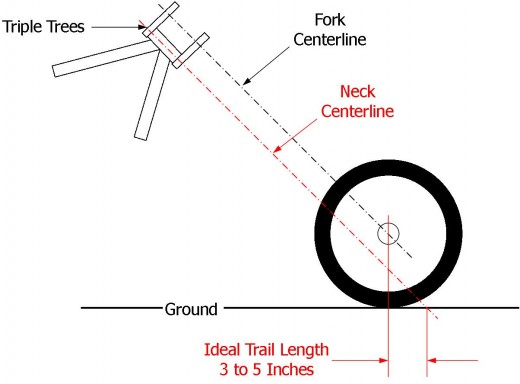
Measuring Trail
One of the handling characteristics of longer front forks and increased rake angle occurs at lower speeds. The effect is called "flop," and it refers to the front wheel wanting to fall to one side or the other when turning. It makes the handle bars hard to control, and if flop is great enough, it can actually make the chopper dangerous to maneuver at low speeds. One of the ways to reduce flop is to adjust the trail.
Trail is a horizontal measurement, that describes the distance between a line drawn vertically from the center of the front axle to the ground and where the neck center line intersects the ground. It sounds complicated to explain, but is more easily illustrated to the right. Though no exact measurement could be reached from my interviews and research, it seems the general consensus is that 3 to 5 inches is the desired range for proper trail. Any trail measurement outside that range will result in undesirable handling characteristics.
Trail Adjustment
Trail can be adjusted in a few ways. Before trying any of these options check with a local mechanic or motorcycle shop.
- Changing the front wheel diameter or tire profile is one way. This will only result in minor changes in the trail however.
- Changing the fork length is another option.
- Adding angled triple trees will change the rake angle and will significantly impact the trail measurement.
- Change the geometry of the frame. This should be done as a last resort, by somebody experienced in frame modification.
Reference: Chopper Fundamentals 101 © 2007










